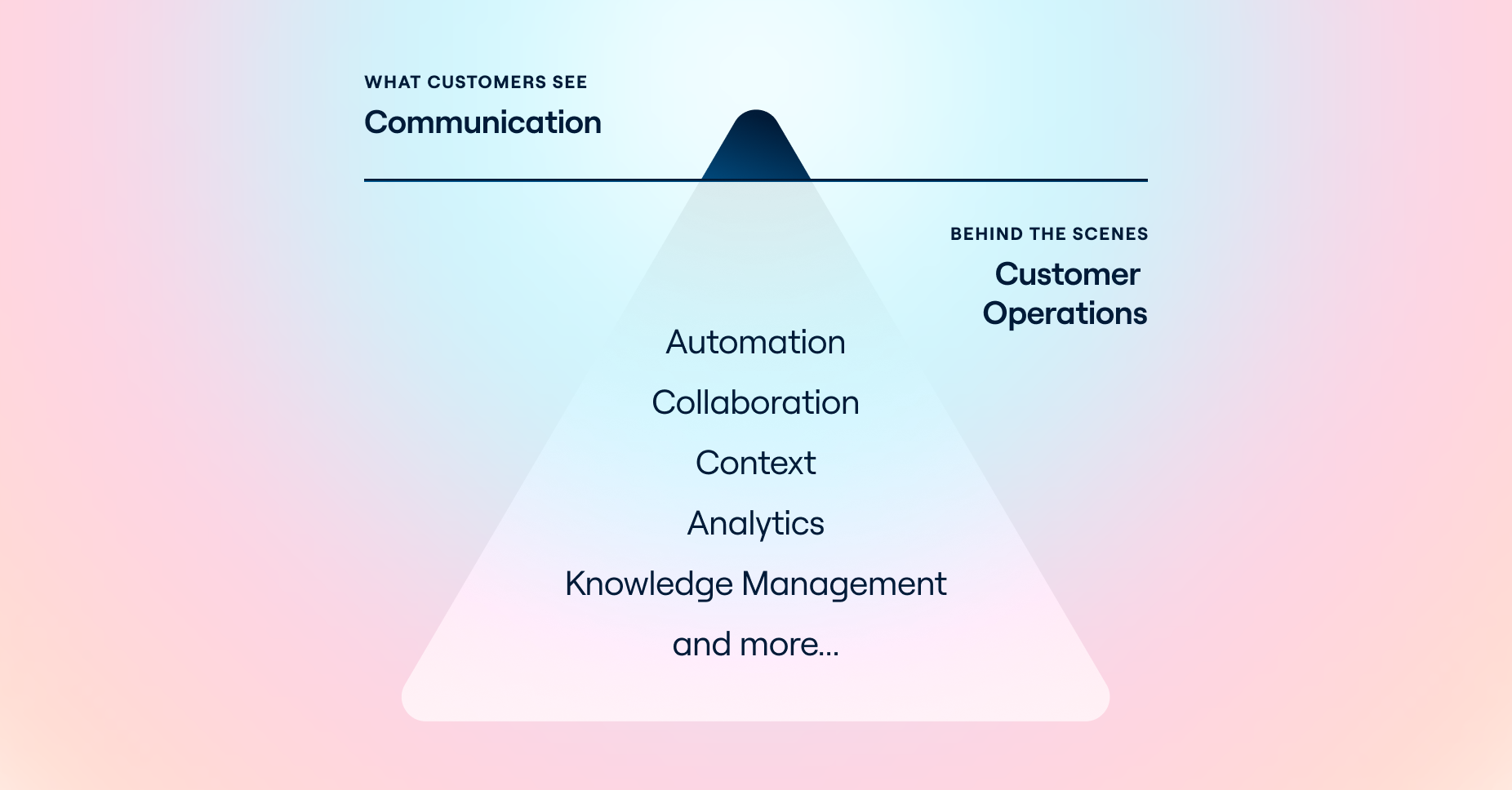Ten years ago, my co-founder Laurent Perrin and I saw that email wasn’t working. It wasn’t built for teams, and businesses lacked a way to centralize and manage it. At the same time, channels to reach new customers - SMS, live chat, social media - were growing rapidly, putting strain on customer-facing teams.
Laurent and I built the front desk of businesses in 2014 to solve these issues, offering helpful, fast, transparent interactions with customers across channels. We wanted to create a platform familiar enough to be used out of the gate to talk to customers on all channels, but flexible enough that advanced workflows could be implemented over time.
Fast forward to 2023: omnichannel communication and native collaboration are table stakes. Customer teams are being forced to adapt to new and urgent challenges, brought on by economic headwinds and swift technological advancements. They face what I think of as a carrot and stick situation.
The stick is, of course, the pressure from the market to do more with a fixed budget, or more with less in some cases. The carrot is all of the progress around generative AI, which carries a big promise to make your teams more productive than ever. Customer service used to be a job of repetitive questions and answers over mundane issues, what I call transactional conversations. Instant answers to these questions are already table stakes. Only the most complex cases will reach the people on your team, and thats where customers’ expectations will lie: in your ability to address these complex conversations, gracefully and rapidly.
Rising to today’s challenges
To fully leverage AI’s potential and uplevel customer service, leaders will need to get smart about the following:
Tool consolidation. There are a couple of reasons why consolidation is important: first, more and better data for AI means more accurate models and better deflection. Second, tool sprawl will not only get in the way of AIs context gathering, but it will increasingly limit your teams productivity to work together and share the context needed to address a complex situation. A push for further consolidation and integration is key to enabling a new level of alignment across customer-facing teams.
Deflection. ChatGPT has changed expectations of what customer service should look like. Before its inception, most chatbots were only capable of delivering an underwhelming experience: they’d help you save on cost, but customer satisfaction would tank. For businesses that differentiate on customer experience, this was a non-starter. Now, for the most common questions, its finally possible to automate the answers with little tradeoff of quality. In order to stay ahead, business leaders need to be thinking about how to implement the best practices of a high-quality deflection strategy with the help of AI.
Flexibility. To implement the changes mentioned above, leaders will need to update a lot of processes, re-train their teams, and hire for new skills. As they prioritize all of that, they’ll want to lean on tools that they can maintain in-house and keep training time to an absolute minimum. Embracing no-code will be important, along with familiar interfaces from the consumer world and mobile experiences for teams on the go.
The game, so to speak, is no longer about optimizing how one person communicates with the customer. It’s about how well your teams work together to drive great customer experiences. This is why, at Front, we’ve been focused on what we call customer operations.
The future of Front, and the future of customer operations
Customer operations encompasses all of the teams, tools, and workflows required to create an exceptional end-to-end customer experience.
Front is more than just a communication tool. Communication is the tip of the iceberg, but so many things are required to deliver great communication: collaboration, workflows, knowledge management, insights, and more.

Going beyond communication has been a big focus over the last year. We’ve brought new power to our automated workflows that make escalations and handoffs between teams even more seamless. We just launched context links, a feature that automatically recognizes any ID in your email and links it to the right system. This new level of integration between core systems is already saving our users a ton of time from context switching. But we can do more.
That’s why were excited to introduce our first-ever Frontlines event in September, where we’ll unveil exciting new capabilities. At the event, you’ll also get the chance to hear from Front leaders and customers on best practices to navigate this new era of work.
This new era will need solutions that bring together the capabilities, context, and the automation teams need to provide consistent, high-quality service. From the front lines all the way to the back office, the support team, success team, sales team, operations team, even engineering and design, every team involved in customer operations holds a piece of the puzzle.
I hope you’ll join us at Frontlines; I’d love to see you there!
Written by Mathilde Collin
Originally Published: 8 August 2023

